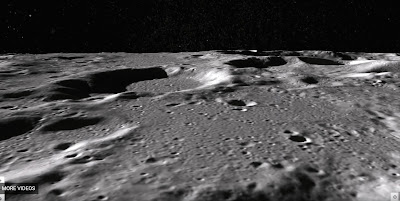 |
| Hope the spacecraft ; credit : MBRSC, UAE |
 |
| Hope team, Women force; credit : MBRSC, UAE |
GOALS:
The Hope mission has its eyes firm on cracking a fundamental issues related to Martian atmosphere. Today, Mars atmosphere is few hundred times less than that of earth's. There are many questions unanswered on what happened to the prevailing atmosphere around Mars that was existing at one time. Mars also has seasons and its own storms erupting around the year. They got 3-goals set which would enhance the understanding Martian atmosphere as a whole: 1. By measuring the lower atmospheric parameters to understand the climate dynamics on Mars. 2. Role of weather in permitting the loss of Hydrogen (and Oxygen) into higher atmosphere. 3. To understand the structure and variability of Hydrogen (Oxygen) in upper atmosphere to estimate the overall loss of Martian Atmosphere to space.
The most successful (>70%) nation to reach the red planet, USA, has majority of the missions on the ground (rovers), the recent MAVEN (2014) orbiter indeed accomplished a huge success in measuring the various atmospheric parameters and solar flux reaching to the planet. The Indian Mars Orbiter Mission (MOM) too had a great deal of success of measuring O, CO, CO2 presence in upper atmosphere by sampling at site employing a mass spectrometer, apart from acquiring few hundreds of pretty pictures of Mars. While both MAVEN (~ 150 X 6,200 km) and MOM (~ 470 X 74,000 km) were in highly elongated orbits and had many other objectives apart from studying the Martian atmosphere; the Hope is completely dedicated to study the lower/upper atmosphere and the interplay among them; ultimately trying to explain the secrets behind the loss of atmosphere. Its planned orbit of around 20,000 X 40,000 km is ideally suited to study Mars on multiple occasions in a day.
Unlike majority of the interplanetary probes which carry variety of instruments to address various scientific goals; Hope carries only 3-types of spectral imagers; meaning these are wavelength based imaging instruments; also capturing visible images of the "Red Planet" at 12-megapixel sensor. They are very powerful tools in providing spatial-scientific information, a unique combination, of late entered into many space missions.
 |
| EXI instrument; credit : MBRSC, UAE |
2. Emirates Mars Infra Red Spectrometer (EMIRS) will provide the details of global distribution of key atmospheric parameters over the Martian daily and yearly, including dust, water ice (clouds), water vapor and temperature profiles
3. EMM Mars Ultraviolet Spectrometer (EMUS) measures relative changes in the thermosphere (highest atmospheric layer) and the radial variability of both the Hydrogen and Oxygen.
HURDLES:
Reaching Mars has been among the toughest hurdles for space faring nations. Out of the 57-attempts made by humans around half of them (30) ONLY have made it to Mars. USA is sitting right on top of the mountain of success including the very first probe to reach planet mars (Mariner-4, 1965). India holds the unique distinction of being the very first country to reach Mars in its first attempt. While European Space Agency had a decent rate of success, Russia had to face many failures including one failed attempt in the recent past along with China (Phobos grunt, Russia-China, 2011). The technological advanced and meticulously working Japan has plans of reaching out to Mars in 2024, the next available celestial window.
As they say "Rocket science" is truly tough nut to crack, the Mars journey involves placing the spacecraft into helio-centric orbit and guiding it towards Mars in the next 8-months. There are dedicated group of people called "mission team". This group needs to take many crucial decisions in selecting proper helio-centric (around the sun) orbit, making course correction as the spacecraft slips out of its intended orbit. The ultimate test of this team would be would be to perform a kind of "slamming" of the brakes of spacecraft which is racing almost at the speeds of around 120,000 km/hr to reduce it to 18,000 km/hr. Having captured by planet Mars, the last hurdle for this team would be to park it in the intended orbit.
As a trained spectroscopist, I like to hold my personal reservations on few finer aspects of the imaging spectrographs; though they have seen the timely tested missions in the recent past (MAVEN) but some of the spectral resolution on EMUS (1.3 nm) are highly ambitious as they demand a very very narrow field of view of 0.14 X 0.2 degree which curtails the throughput (light gathering power) to feeble levels. Again, in my view... this is very meager issue as compared to reaching planet Mars... How sweet that feeling will be?
The Hope spacecraft is planned to be launched from Japan using a Mitsubishi Heavy Industries H-IIA launcher and is set to arrive at Mars in February 2021.
I wish each and every group member of Hope ... all the very best ... they have demonstrated immense amount of dedication and showed a high level of maturity as narrated by their mentors at LASP (from the interview).
Hope..... to meet you on Planet Mars......
[Like to offer credit to Elizabeth Gibney's article for some of my reference, appearing in Nature .... ]











